Strona główna
Polish Artillery Getting a Boost
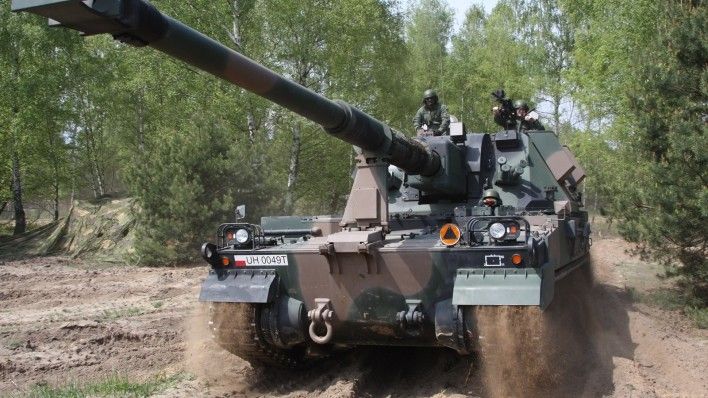
The modernization programme adopted by the Polish military is most efficient in the area of artillery and rocket artillery. Assets and support measures are being supplied by the PGZ Group’s HSW S.A. company in two programmes in this domain: Rak and Regina. Throughout the last couple of months HSW has finalized a contract concluded back in 2016, concerning the Rak self-propelled mortars and command vehicles for the mortar units. The Polish company has also finalized the delivery process pertaining to the first squadron-level Regina module involving Krab howitzers. HSW has also been awarded with further Rak mortars and ammunition carriers order and development works are also underway. The above means that we may yet again speak of another acceleration of the artillery modernization process.
One should remember that the boost for the Polish artillery component was initiated by conclusion of an agreement covering manufacturing and delivery of 24 AWA artillery ammunition carriers, three for each of the KMO company-level fire module units of the M120K Rak self-propelled mortars. These assets have been a subject to a contract signed in April 2016, with a value of PLN 968.3 million. The original agreement concerned solely the M120K effectors, 8 for each of the KMO elements, and AWD command vehicles, 4 per KMO. 24 AWA ammunition carriers come at a whooping pricetag of more than 129 million zlotys. The delivery is to be finalized in 2020. The ammunition carriers are yet another phase of complementing the composition of support companies. This stage began towards the late 2017, with an agreement worth 53 million zlotys, concerning 8 AWRU Artillery Armament Repair Vehicles, one per each KMO element. Another element that belongs to the support companies is the AWR Artillery Reconnaissance Vehicle using the Rosomak platform as its base. The platform is in its development, with finalization of effort planned in 2020.
Read more: Rak Mortars Growing Strong
Defence Minister Mariusz Błaszczak, when signing the AWA contract in August, announced that this shall not be the last event as such at HSW. The Minister also claimed that another agreement concerning more Rak modules may have also been expected. Confirmation came on 11th October, when, in presence of the head of the MoD and HSW S.A. employees, Brig. general Dariusz Pluta (Head of the Armament Inspectorate) and Bartłomiej Zając, President of the Management Board at HSW S.A., signed a contract worth 275.5 million zlotys. That agreement assumes that the 2016 agreement shall be extended, with expected production and delivery of extra 18 M120K mortars and 8 AWD vehicles between 2020 and 2021. 2 extra mortar platforms would be received by the Artillery and Armament Training Centre based in Torun.
Company-level Fire Modules [KMO] no. 9 and 10 involving the 120 mm self-propelled mortars would be received by 12th and 17th Mechanized Brigades.
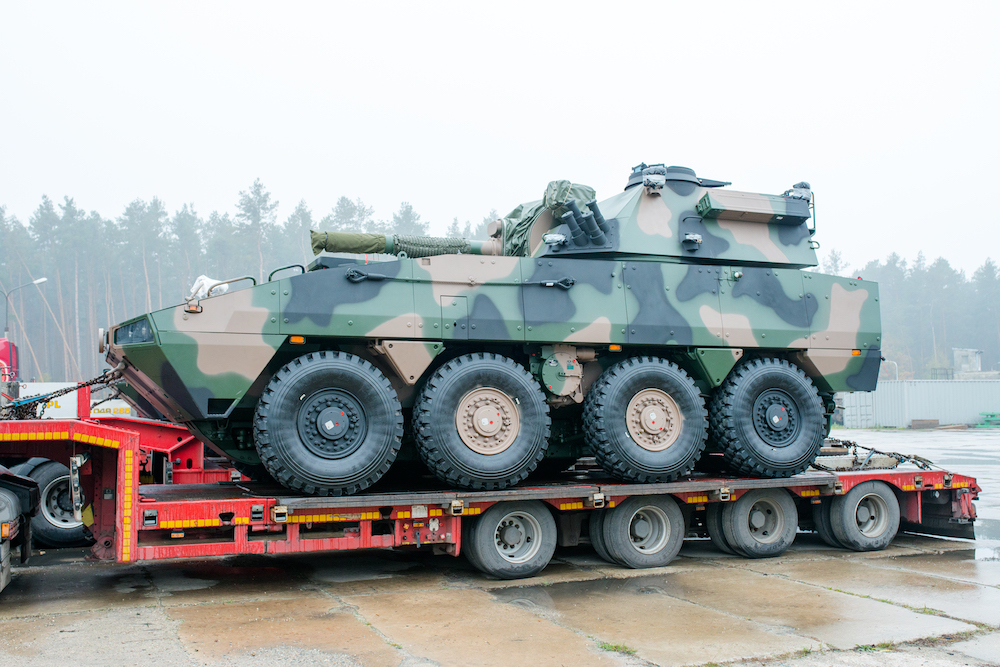
On the date of signing the agreement HSW sent out the first (out of two) convoy with equipment for the last, eighth KMO unit ordered in 2016. The second convoy with M120K and AWD vehicles reached its destination a few days later. The equipment was formally handed off on 30rd October.
This means that finalization of the first out of two agreements concerning delivery of modern and qualitatively new artillery assets designed and manufactured by the Polish defence industry took place in line with the adopted schedule.
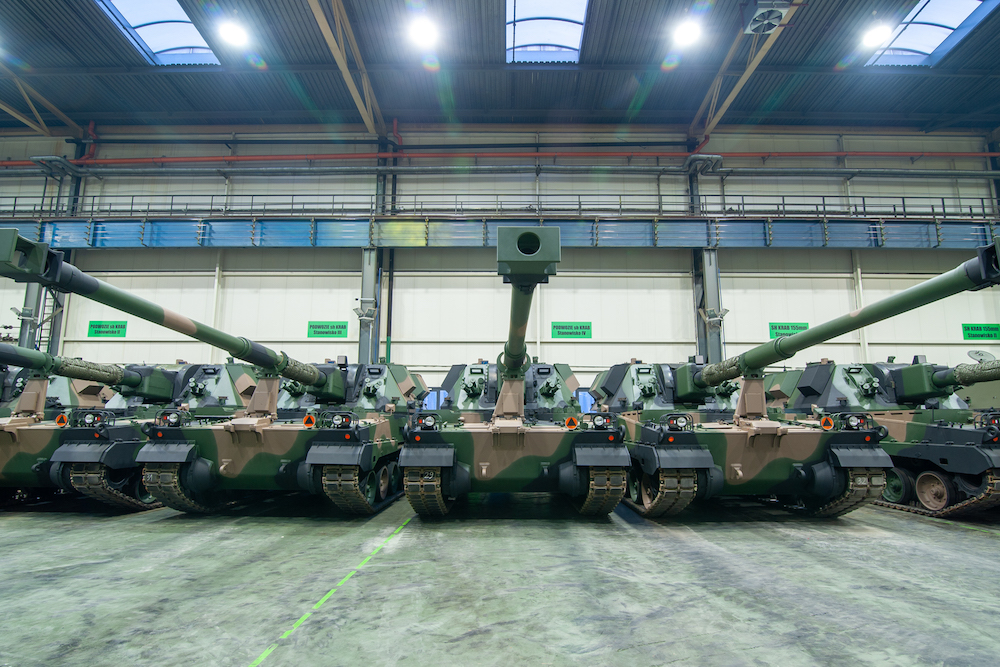
HSW also sent out another two convoys with other brand-new military equipment. On 23rd and 26th October HSW S.A. sent the equipment for the third Regina DMO (Squadron-level Fire Module) element based in Sulechów (5th “Lubuski” Artillery Regiment). The Regina modules are the units equipped with the Krab tracked 155 mm self-propelled howitzers. Notably, the equipment for the first battery (8 Krab howitzers, 4 command vehicles, 1 ammunition carrier, 1 recovery/repair vehicle) was received by the 5th Regiment in March. Equipment for the second battery was delivered in June. Krab howitzers were handed off on 30th October, during a ceremony involving Minister Błaszczak. The scenario was similar to the one applicable to the Rak mortars received by one of the battalions of the 12th Mechanized Brigade.
After the last tranche of equipment has been delivered, the inventory of the Sulechów regiment is now complete. HSW, meanwhile, managed to deliver and manufacture the first of four series-manufactured Regina modules, contracted in mid-December 2016.
HSW S.A. facility has been left by 8 Krab howitzers and support vehicles belonging to the third battery of the first series-manufactured Regina squadron-level fire module. Hence we are implementing the agreement signed with the MoD in a timely manner. Our equipment has already gained respect from the military and has been used by the Polish artillery units since a few months now. It is a series-manufactured equipment, manufactured autonomously by us, confirming the HSW’s expertise in a role of a manufacturer of complex artillery systems.
Earlier on, back in August 2017 HSW also delivered equipment for the first “implementation” Regina module acquired by the MoD via a separate procedure (agreement concerning an implementation project signed back in 2008 involving delivery of 8 Krab systems, with annex signed in 2012, so that became a contract envisaging acquisition of a complete Regina module). The aforesaid agreement resulted in delivery of 24 self-propelled howitzers and 19 support vehicles (for the 11th “Mazurski” Artillery Regiment); the support vehicles inventory includes: 2 command-staff WDSz vehicles, 9 WD command vehicles, 6 WA ammunition carriers, 1 WRUiE armament and electronics repair vehicle and 1 vehicle for the liaison officer. After the second (first series manufactured) Regina module was delivered to the 5th Artillery Regiment the Polish military has two 155 mm self-propelled artillery squadrons at its disposal: 48 Krab sph with the relevant logistics support assets.
The artillerymen based in Sulechów began firing live rounds even before receiving the equipment for the second battery. The Regiment fired its first live rounds at the Nowa Dęba range in May, under the supervision of HSW instructors. In September, a few weeks after receiving the equipment for battery no. 2, the regiment, using 15 howitzers, command vehicles, ammunition and repair vehicles, with more than 150 soldiers and 30 support vehicles involved, the soldiers organized an exercise in Drawsko Pomorskie.
The exercise involved movement, formation and position shifting and firing rounds by single vehicles, platoons, batteries and a squadron. Due to the size of the range it was possible to fire rounds at targets located around 12 kilometers away - way below the performance threshold of the Krab howitzer, attainable with the rounds currently used. 200 rounds were fired during the exercise.
Another unit that is going to be armed with the Regina assets is the 23rd “Śląski” Artillery Regiment based in Bolesławiec. The regiment that is a part of the 11th “Lubuska” Armoured Cavalry Division involves 4 artillery squadrons, currently using the 152 mm Dana wheeled systems and WR-40 Langusta MLRS systems delivered by HSW. For this unit the Regina DMO element will be its debut with tracked platform. Never in the past was it equipped with the 2S1 Gvozdika system (of which Krab is seen as a replacement). According to the schedule adopted, deliveries of the Regina elements for this unit would begin with delivery of equipment for the first battery until 30th June 2020. The schedule of deliveries pertaining to the remaining batteries is contained in the agreement signed in December 2016. HSW S.A. assures, nothing stands in the way to meet the originally defined deadlines.
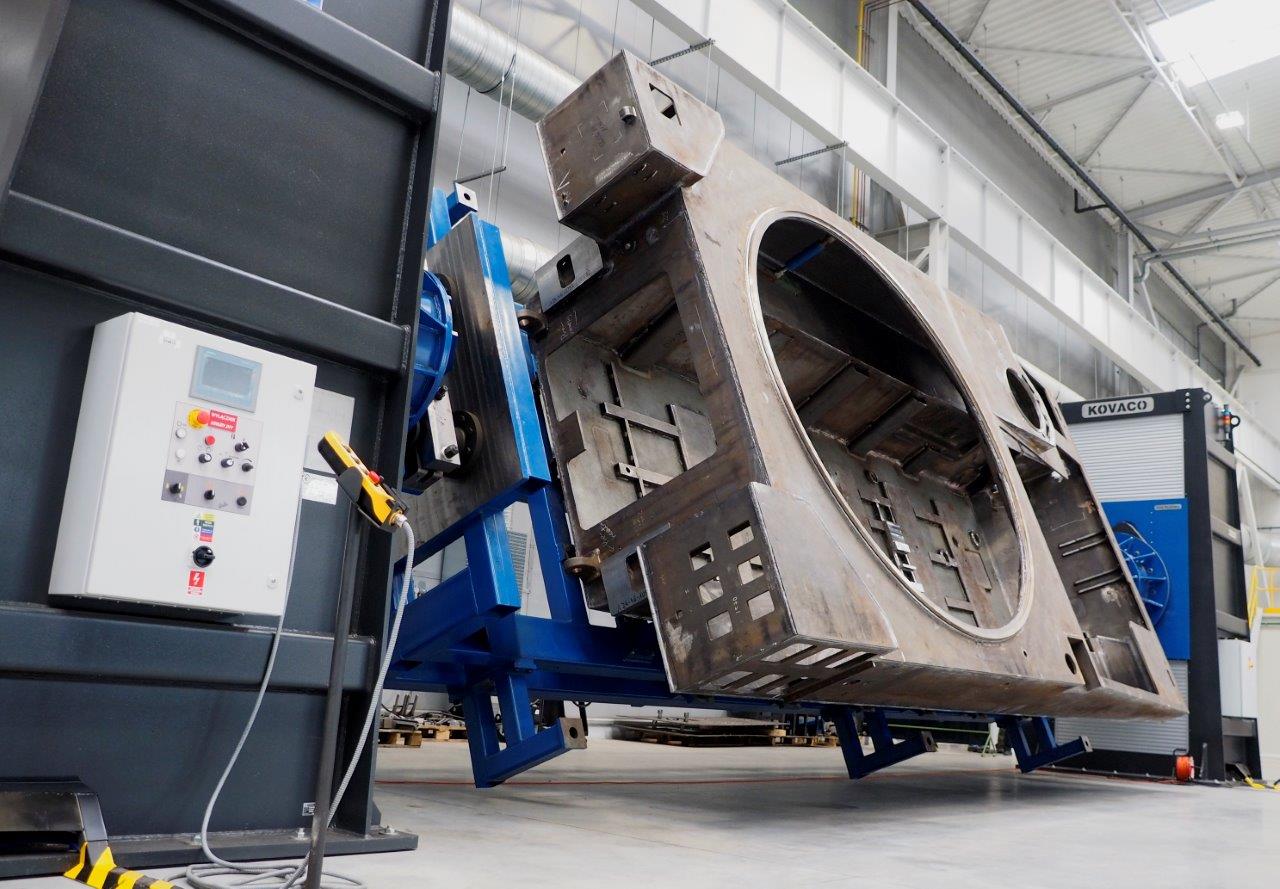
One shall not forget that at this stage HSW S.A., the manufacturer of the Regina modules, is obliged to carry out type certification for the K9PL/PK9 platform and launch series manufacturing. Up until now, Krab systems delivered to the customer used either platforms delivered by the licensor, Hanwha Techwin, assembled completely, or assembled at HSW on the basis of components delivered from Korea within the framework of stage one of the gradual technology transfer and training activities involving the HSW employees. Polonization of the platforms, from the very first stage, namely preparing the armour sheets and welding, is going on already. Nevertheless, the procedures envisage type certification for the platforms manufactured in their entirety at HSW S.A., with involvement of technologies developed at the company.
The positive result of this certification conditions the series manufacturing authorization in Poland.
– HSW intends to begin type tests for the platform until the end of this year. Scope of the tests has already been arranged with the Ordering Party and the tests would soon begin. We expect them to last for around 2 months. Due to the defined scope of tests in a variety of terrain conditions and firing, and subsequent verification of the welded hull, the Ordering Party defined 30th March 2020 to be the final deadline for finalization of the test programme. HSW S.A. will do everything within its reach to shorten the test term, Jowita Jajdelska, spokeswoman at HSW S.A. claims.
Agreement signed in December 2016 envisages gradual polonization of the chassis for the purpose of the Regina programme. Another stage of polonization would begin starting from the second DMO unit - here the hull would be welded in Poland in its entirety. Further elements would undergo polonization in case of further DMO elements. Full implementation of the Regina agreement concluded in 2016 is expected to be accomplished in 2024, unless the MoD makes a decision to increase the number of artillery regiment that would utilize the said system.
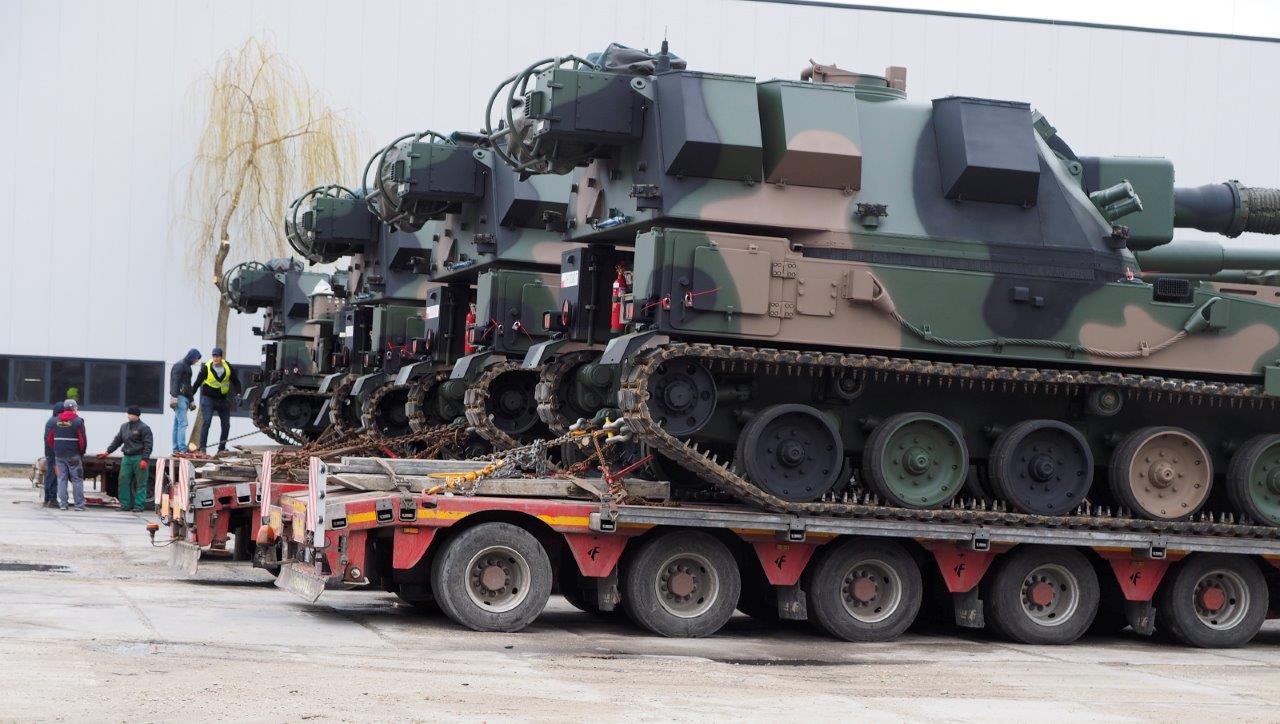
Rumors suggest that another Regina DMO element (24 howitzers) could possibly be procured. Similar rumors suggest that Nowa Dęba, located close to Stalowa Wola, would be the location where a new artillery regiment could be based, using the Regina DMO element and, possibly, another batch of WR-40 Langusta or the first batch of Langusta II rocket artillery system. Dęba land forces field training range is located in between Stalowa Wola and Nowa Dęba. The facility is already being expanded and modernized, following the relevant decisions made by the MoD. HSW S.A. refrains from confirming whether talks are in progress, concerning acquisition of extra Regina squadron.
The impetus gained in the process of manufacturing the 155 mm tracked howitzers creates questions concerning acquisition of Krab simulators and training vehicles. We do know, however, that contracts concerning the new Regina DMO elements also include a training package provided by HSW. Once the equipment is received, it is the military that would remain responsible for training the soldiers who are assigned to the artillery squadrons once the Krab becomes a part of the inventory.
Procurement of a simulator and training system and a training battery equipped with the remaining elements of the system (WRUE, WA, WD/WDSz) vehicles could, undoubtedly, shorten the training process, elevate it to the next level, improve its quality. Steps as such would also make it easier, considering several years of use of such equipment, to adopt upgrades envisaged by the manufacturer within the scope of the planned modernization. Training battery of Rak M120K self-propelled mortars has been a subject to talks between HSW and the military. This is motivated by the idea aimed at creating a Rak training battery at the training centre in Toruń, becoming a heart of the future Rak crews training facility.
It cannot be ruled out that Leopard Training Centre at the 10th Armoured Cavalry Brigade would be used as a model solution here. Not only is the Polish industry in possession of proper know-how, it also has relevant experience gathered in the area of creating complex combat systems simulators. Thus, creating a simulator solution for the Regina DMO should not be a problem. Nonetheless, relevant decisions within that regard shall be made by the user who should be interested in effective, safe and economic training means. Over the lifecycle of the Krab sph, the personnel at the units would rotate at least a couple of times.
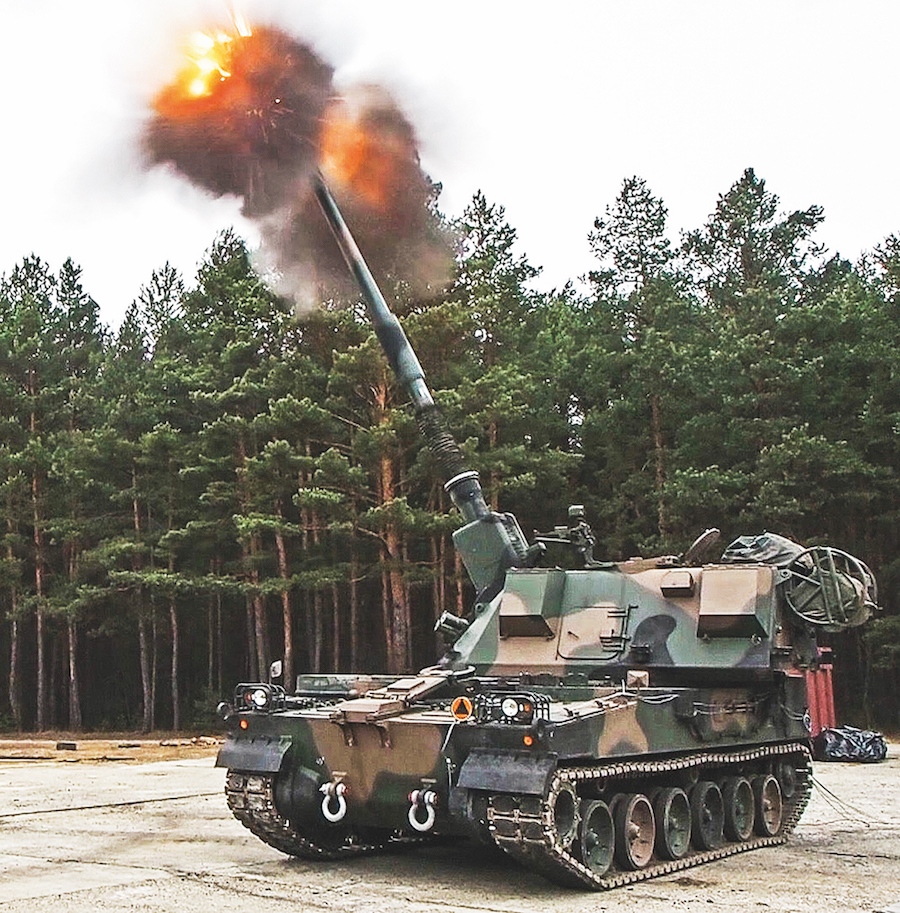
Reconnaissance component of the Regina modules is still a subject that can be discussed. This is important as, technically speaking, Regina modules may utilize ammunition with a much better performance - ranges of 50 kilometers+ are said to be achievable, should proper decisions be made at the level of the MoD and at the level of teh Armed Forces. Adequate reconnaissance support is a must in case as such. At the artillery regiment level the Polish military operates FlyEye UAV and Liwiec firefinder radars.
Saturation is much lower, however, than in the leading NATO member states. Meanwhile, the military is procuring more and more assets allowing the Armed Forces to attack targets at ranges of 40 kilometers and beyond. Not only are we referring to Krab here, but also to rocket systems. Recently, a batch of Feniks rockets was acquired, with a range of more than 40 kilometers. Not only can these be employed with Langusta, as they are also compatible with the BM-21 and RM-70 systems. Kryl wheeled self-propelled howitzer is another asset that could also be introduced into service soon.
The sooner the documentation-related effort and the qualification test programme come to an end, the sooner design/technical modifications expected by the military can be taken into account, even though no official information is available as to what direction defines the evolution of the artillery systems. However, a quick look at the global development trends applicable to similar systems (155 mm self-propelled howitzers in general) it may be assumed that in case of the final configuration of the Kryl system more emphasis could be placed on automated loading process.
Nonetheless, the necessity now is to finalize the R&D procedure and to formulate conclusions concerning further development of the equipment and actions within that scope, including the work that could be undertaken with regards to the remaining components of the future Kryl modules. 168 Kryl sphs were to be acquired, according to the original assumptions made by the MoD back in 2012 - seven DMO modules, 24 howitzers each.
Kryl howitzer prototype has been available since some time now and it is ready for the preliminary tests to begin. HSW is expecting the updated tactical and technical assumptions to be delivered to the National Centre for Research and Development and the Contractor during the upcoming weeks, said Jowita Jajdelska.
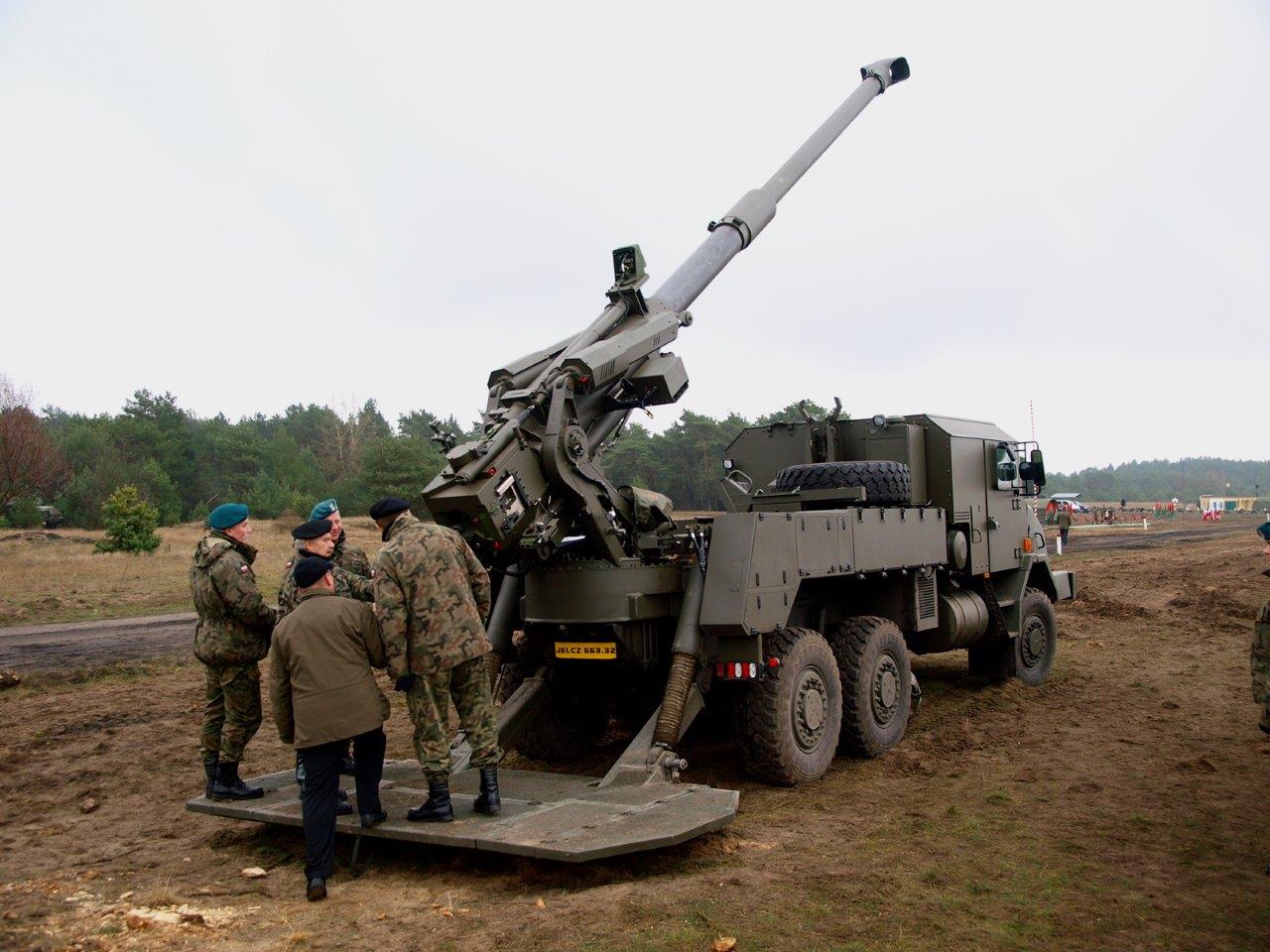
Not only is HSW working for the artillerymen or for the armoured/mechanized units (30 mm ZSSW-30 remote control turret system and NBPWP Borsuk amphibious IFV) or engineering elements (BAOBAB scattered minelaying system), as the company is also working on other contracts. In July 2019 a contract valued at 54 million zlotys has been signed with the Polish Ministry of Defence, concerning delivery of 34 SŁ-34C dozer-loaders between 2020 and 2021 (with optional acquisition of extra 17 vehicles).
Jelcz S.A. company belonging to HSW was also awarded with an order to deliver, between 2019 and 2022, 73 vehicles in 6 different variants for the first two Patriot system batteries. This agreement, with a value of 171 million zlotys, comes alongside contracts that had been signed already, with regards to delivery of varied special-purpose vehicles and trucks. Meanwhile, in October, simultaneously with delivering the eighth Rak module and the third battery of the second Regina element, HSW also delivered another batch of TRI engineering vehicles overhauled at the facility. TRI engineering carriers were being delivered by HSW S.A. to the Polish military back in the 1990s.
Jerzy Reszczyński
